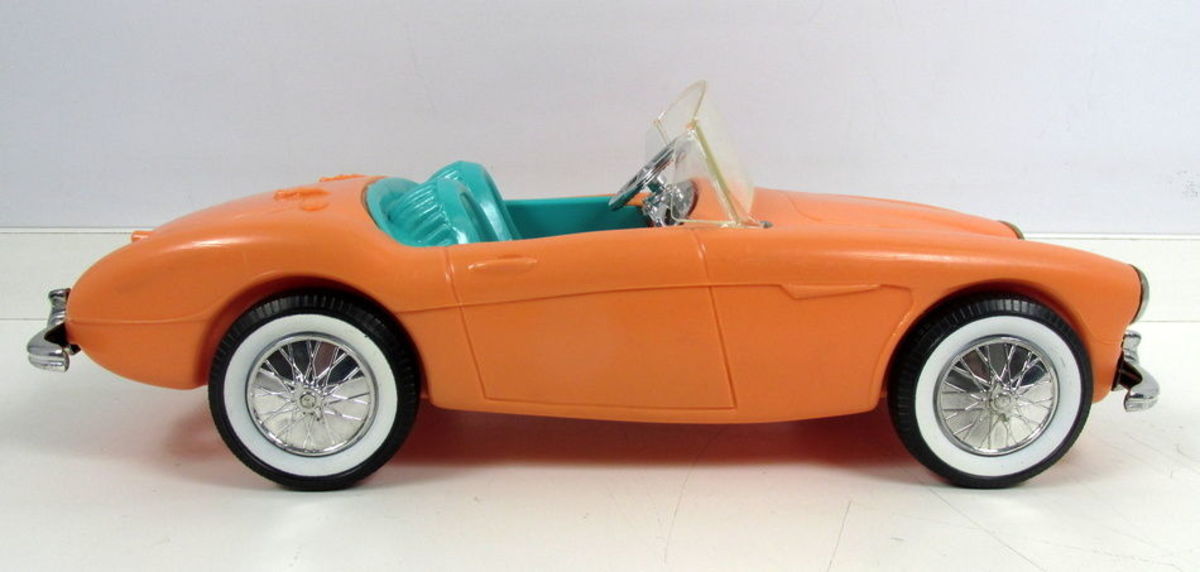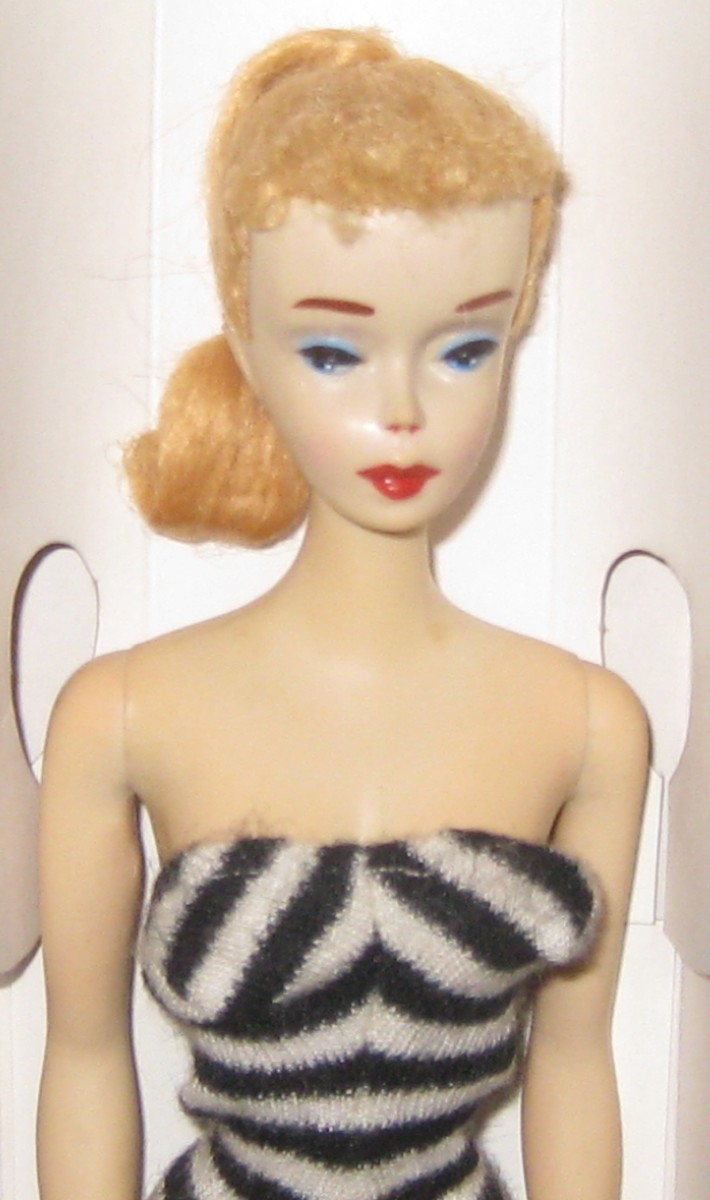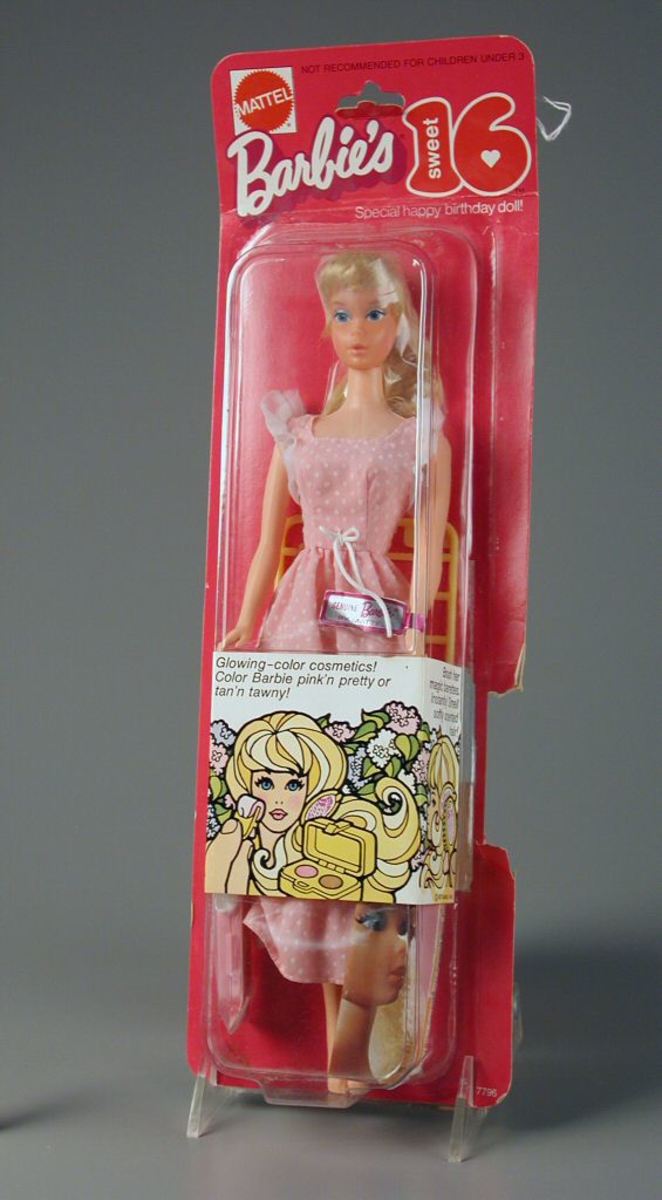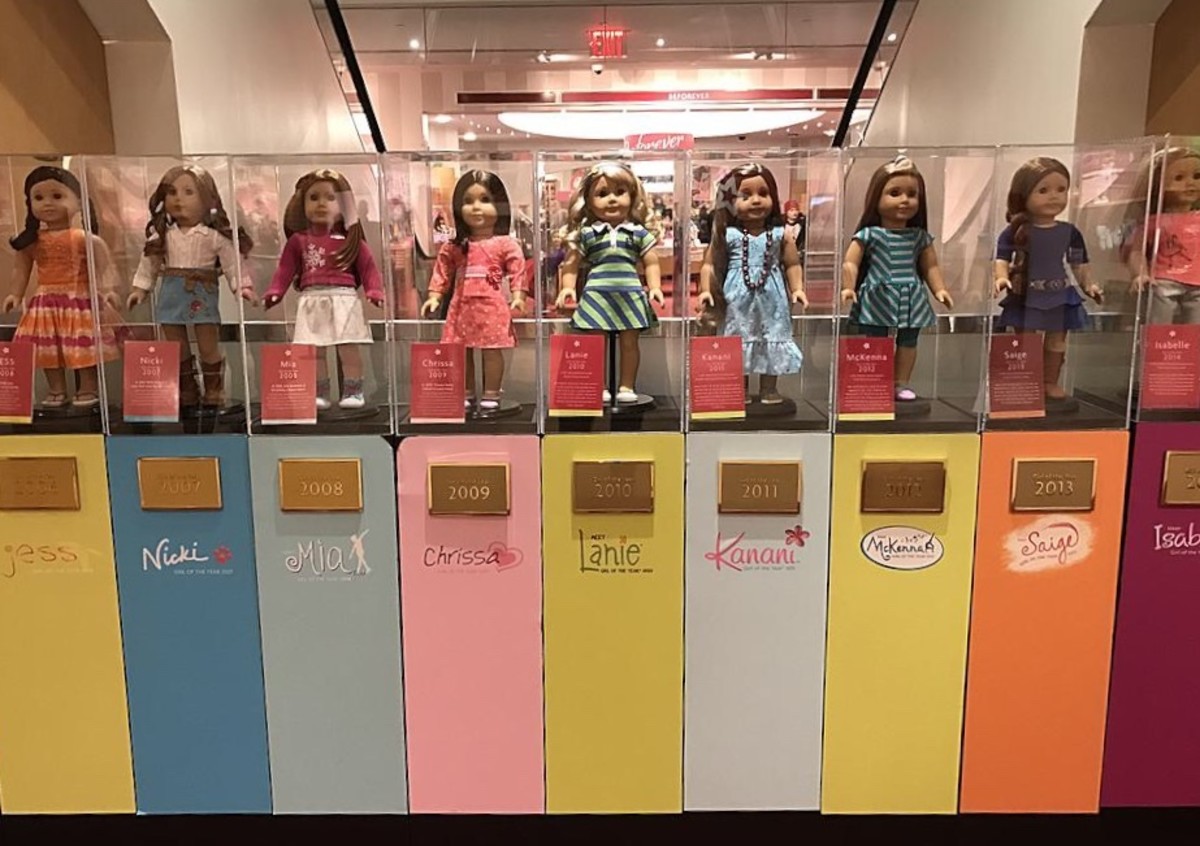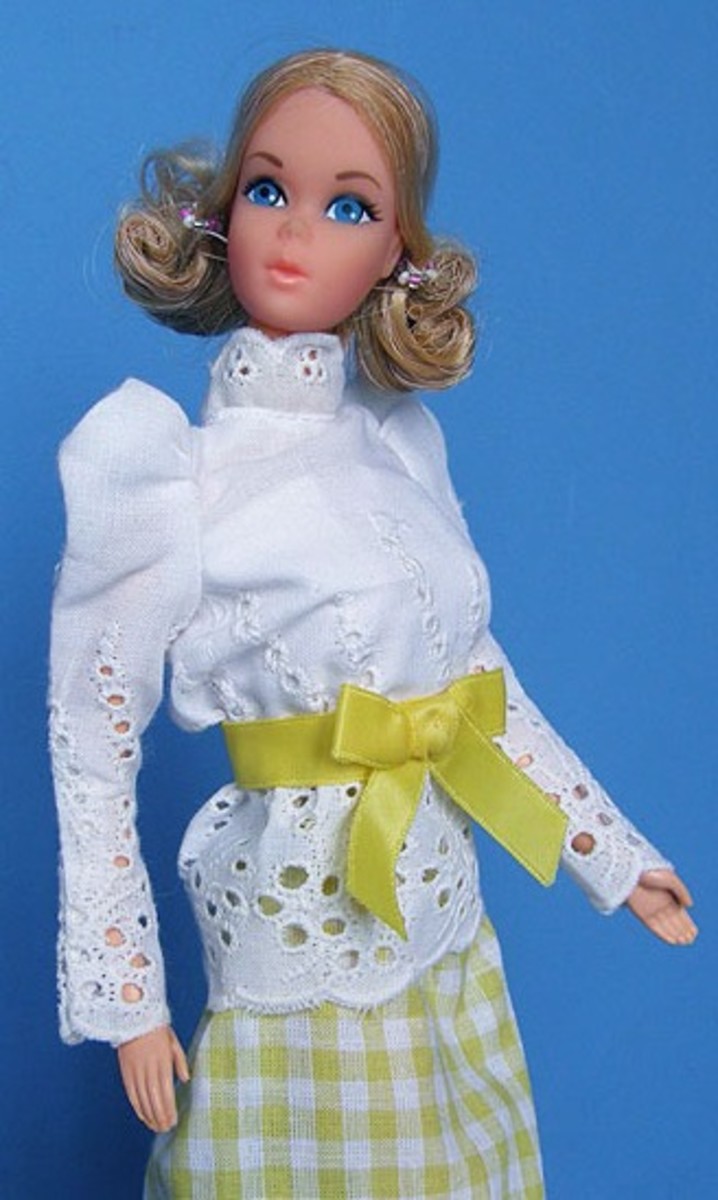10 Bizarre and Controversial Barbies
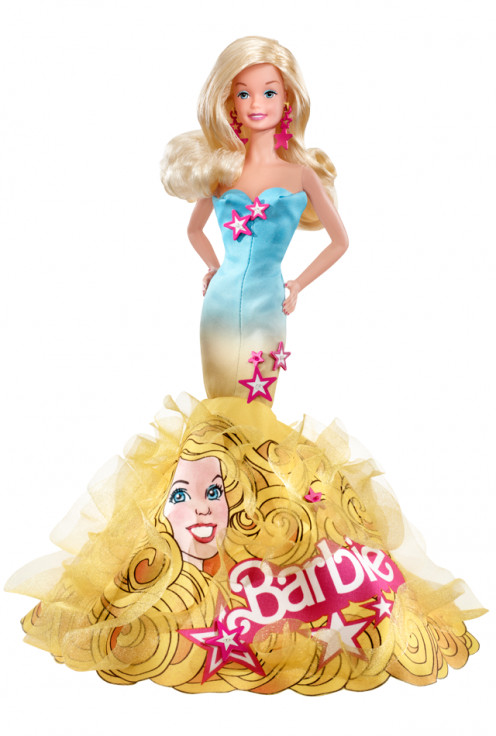
Since American businesswoman, Ruth Handler, released the first Original Teen-age Fashion Model™ Barbie® (1959), the world has been infatuated and infuriated.
The doll's iconic image, consisting of a top-knot ponytail and a zebra striped swimsuit, ruffled conservative consumers. More specifically, the doll had a distinctive, adult-sized chest that, prior to Barbie®'s debut, dolls resembling newborn infants and toddlers were being marketed to adolescent girls.
Inspired by her daughter, Barbara, and the adult German doll, Bild Lilli, Handler created an idea that could serve as an aspiration for the youth.
Whether the individual views the doll as inspirational or an abomination, the revolutionary idea that Barbie® was able to pursue any occupation or interest she desired, certainly has shaped the perception of females in the world today.
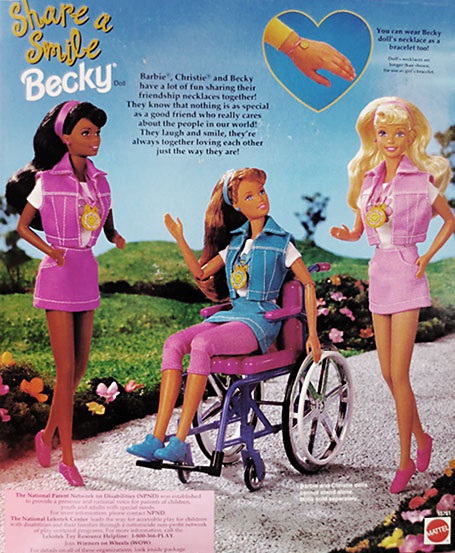
1. Share a Smile™ Becky® (1997)
Barbie® gained a new friend when Mattel introduced Share a Smile™ Becky®. The character was featured as handicap in pink wheelchair.
The only public complaint came from cerebral palsy patient, Kjersti Johnson, a seventeen year old girl from Tacoma, Washington. The girl claimed the doll could not fit inside the elevator of the Barbie® Dream House™.
Mattel has also released I'm the School Photographer™ Becky® (1998) and Paralymic Champion™ Becky® (1999).

2. Twist 'N Turn Black Francie® (1967)
Arguably considered the first African-American Barbie®, Mattel introduced a black version of Twist 'N Turn™ Francie®, the MODern cousin of Barbie®. Despite lacking distinct African characteristics other than darkened skin, the doll was released using the head mold for the original Francie®, which included Caucasian facial features and hairstyles.
In short, the integration of an African-American character outraged white critics while the white-washing of African characteristics outraged black critics making the doll commercially unsuccessful.
With growing demand for diversity, Mattel officially released the first ethnic friends of Barbie®, Talking™ Christie® (1968) and Julia® (1968). Eventually, Mattel released a more authentic African-American interpretation of the doll with Black Barbie® (1980), that included the famous slogan:
"She's black! She's beautiful! She's dynamite!"
The character has become legendary among collectors and continues to be featured as the first African-American Barbie® re-productions, including The Wild Bunch™ Francie® (1997) and Fuchsia ‘N Fur™ Francie® (2012).
3. Barbie® & Tanner™ (2006)
Teaching adolescent girls the reality of owning a pet, Mattel released Barbie® with her dog, Tanner.
The doll is able to feed the dog kibble. By pushing down on the tail, a pile of nuggets comes out that Barbie® would then be able to pick it up with the included poop scoop and place the dog's trash bin.
4. Oreo School Time Fun™ Barbie® (2001)
After the success of Oreo Fun Time™ Barbie® (1997), Mattel and Nabisco launched a second cross-promotional product that included the modern practice of producing both the Caucasian and African-American version of the doll.
Immediately upon release, consumers began to complain that the term, Oreo, was a derogatory slang word for a person who was "black on the outside and white on the inside," similar to the sandwich cookie itself. The company discontinued the doll.
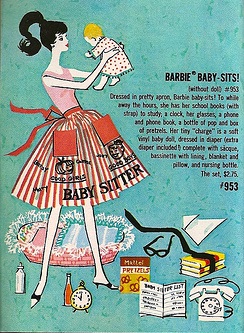
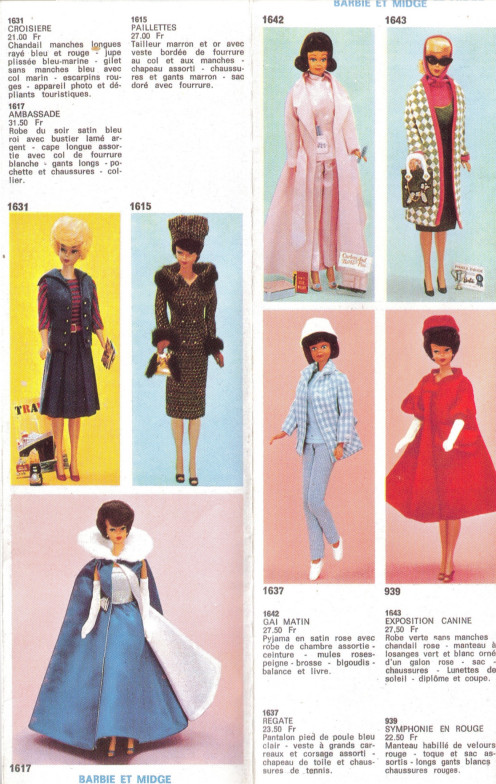
5. Barbie® Baby-Sits™ (1963)
Early in the doll's history, Mattel released a now controversial Barbie® outfit set.
The set included a pair of horn-rimmed glasses, an apron, a bottle of soda, a box of Mattel pretzels, a list of telephone numbers, a rotary phone, an infant wearing a safety-pin attached diaper and sacque, a bassinet with a pillow, a baby bottle, an alarm clock, and the three books: How to Get a Raise,How to Travel, and How to Lose Weight, which advised girls "Don't eat!".
Critics claimed Barbie® promoted an unrealistic idea of body image for adolescent girls and anorexia.
6. Teresa® & Mika™ (2007)
If you are not a canine lover, Mattel has also released Barbie®'s friend,Teresa®, with her cat, Mika.
Similar to Barbie® and Tanner™ (2006), the doll feeds the cat water through a clear bottle. The cat is then placed on the included litter box where the body would be squeezed and water would be released. There is a scoop included to take out the "soiled" litter.
7. Barbie® Slumber Party™ (1965)
Mattel released yet another now controversial Barbie® outfit set.
The doll set included a satin pajamas, a fleece robe, open-toed heels, curlers, bobby pins, comb, brush, a bathroom scale that is permanently set at 110 lbs, and another copy of How to Lose Weight.
Critics claimed Barbie® (hypothetically being 5 ft 9 in) would be 35 lbs underweight, again, promoting an unrealistic idea of body image for adolescent girls.
The set was re-introduced when Mattel released Sleepytime Gal™ Barbie® (2007), which excluded text on the included book.
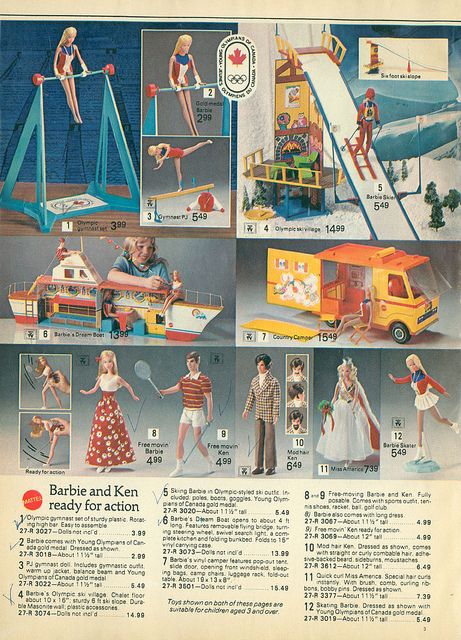
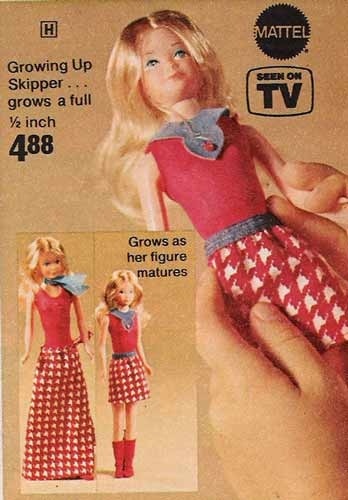
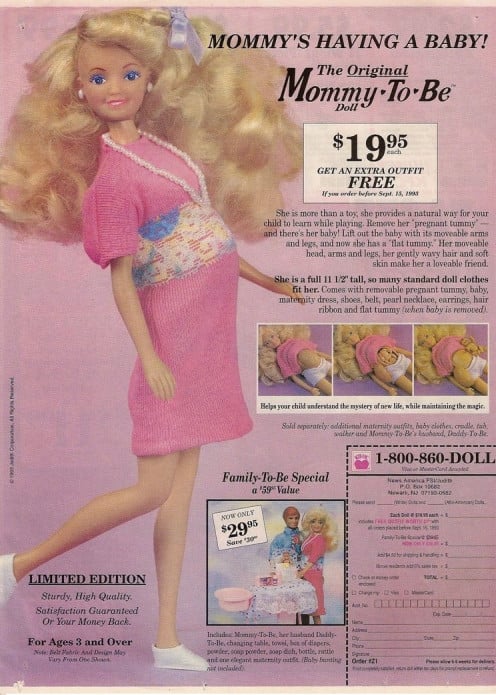
8. MOD Hair™ Ken® (1976)
Before the re-introduction of Shaving Fun™ Ken® (2010), Mattel released MOD Hair™ Ken®, complete with an attachable beard, sideburns, and mustaches.
Prior to the release, the male fashion doll had a more conservative crew-cut hairstyle.
Ken®'s transition to a MODern hairstyle cemented a trend of long hair on men being socially acceptable in mainstream America.
9. Growing Up™ Skipper® (1975)
"Make her grow from a young girl to a teenager in seconds!"
Similar to the more recent MyScene™ Growing Up Glam™ (2006) line, Mattel released a modern version of Barbie®'s younger preteen-age sister, Growing Up™ Skipper®.
By rotating the doll's arm clockwise, Skipper® could transform from an adolescent into a teenager by growing an inch taller and developing breasts.
The doll disturbed customers and prompted the company to change the appearance of Skipper® entirely, creating Super Teen™ Skipper® (1979).
10. Happy Family™ Midge® & Baby (2002)
With the release of the Wedding Day™ Midge® (1991) line, it was announced that Barbie®'s best friend had married Allen®, Ken®'s best buddy. It was only natural that eleven years later, Mattel would produce the Happy Family™ line.
Similar to the friends of Barbie®, the Heart Family™(1985-1989), the series included Midge® pregnant with Nikki (and later, Cassandra), Allan®, toddler Ryan, Grandma, Grandpa, and the dog, Samantha.
Originally, Midge® was sold pregnant with Nikki inside a removable magnetic womb, resembling the earlier released character, Mommy To Be (1993).
Although, due to an overwhelming number of customer complaints claiming the doll promoted teen-pregnancy and pregnancy out of wedlock, Midge® was no longer shown pregnant until Mattel dropped the Happy Family™ line completely and changed Midge®'s appearance entirely, creating Barbie® Life in the Dream House™ Midge® (2013).
What was your favorite decade of Barbie®?
© 2015 samanthamjordan

